Disrupting for Good: AI, ...
Online Conference
28 Jan 2026 / 29 Jan 2026 read more
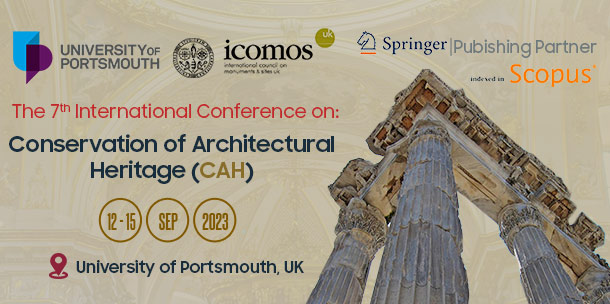
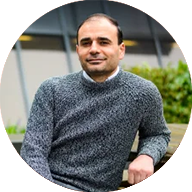
Reader in Architectural Heritage at School of Architecture, the University of Portsmouth, UK.
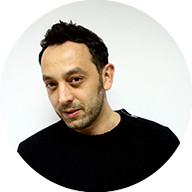
Reader in Architecture at School of Architecture, the University of Portsmouth, UK.
Nessma Farouk
Conference Coordinator
[email protected]
(+20) 3 5763827 | (+20) 3 5763828
(+20)1000028021
Subscribe to our newsletter
The seventh edition of the International Conference on “Conservation of Architectural Heritage: Sustainability (CAH)” was held in collaboration with the University of Portsmouth, UK, and took place physically and virtually from the 12th to the 14th of September, in an effort to include attendees from all corners of the world.
The conference served as a primary forum for discussion on the topic of architectural heritage and its relations to sustainability, links to the environment, conservation efforts and techniques, management methodologies, novel innovations and technologies, and more.
The conference aimed to stress the importance of the relationship between heritage and sustainability and to emphasise the unprecedented recognition of the notion of culture as part of performing the Sustainable Development Goals. Culture and more specifically Cultural Heritage can play a crucial role in the development of our built and unbuilt environments, especially through SDG 11. This goal, which asks to make the cities and human settlements inclusive, safe, resilient, and sustainable, intends to strengthen the efforts to protect and safeguard the cultural and natural legacy of our cities and the world (target 11.4). Therefore, conservation of tangible and intangible heritage is paramount in making our world more sustainable.
The conference comprehensively covers the topic of heritage conservation & maintenance against degradational factors. Some of the main topics that were discussed include:
1- The Concept of Heritage Sites, their Conservation and Sustainable Adaptation
2- Heritage Studies, Management, and Promotion
3- The Importance and Prominence of Architectural Heritage and its links with Sustainability
4- Archeology Management and Sustainable Restoration
5- Citizens’ Involvement and Their Roles in Conserving Their History
6- Concepts, Methods, and Technology Used in Sustainable Heritage Asset Conservation
7- Post-Crisis Heritage Conservation and Management
8- Case Studies and Best Practices for the Long-Term and Sustainable Preservation of Heritage Sites
Day 1:
Welcoming Session:
The Opening Ceremony started with online registration and welcoming speeches from the Conference Chairs, Dr Tarek Teba, Dr Antonino Di Raimo, and IEREK’s founder, Dr. Mourad Amer.
Short welcoming speeches were given by the conference chairs Dr Tarek Teba, Reader in Architectural Heritage at School of Architecture, the University of Portsmouth, UK, Dr Antonino Di Raimo, Reader in Architecture at School of Architecture, the University of Portsmouth, UK, as well as George Burrows, Associate Dean for Research and Innovation, Faculty of Creative and Cultural Industries, the University of Portsmouth, UK, Prof. Donatella Rita Fiorino, Associate Professor at the Department of Civil, Environmental, and Architecture Engineering, University of Cagliari, Italy, and Ms Clara Arokiasamy OBE, President of ICOMOS-UK and Chair and Founder of ICOMOS-UK’s Intangible Cultural Heritage Committee.
Following the speeches, a brief presentation was given that introduced IEREK as a company and its activities to the audience.
Plenary session:
A plenary session followed introducing the first keynote speaker Prof. Giles Pritchard, Founder and Director of Pritchard Architecture, a heritage led design practice based at Porters Lodge in Portsmouth Historic Dockyard, whose speech was entitled: “Heritage Led Design – A practice perspective: The challenges of adapt re-use of buildings around Portsmouth and Gosport.”
The second keynote speaker was Prof. Simone Sfriso, Co-Founder and co-Principal at Studio Tamassociati, Visiting Professor University of Portsmouth, UK, whose speech was entitled: “Sustainability stands for cultural heritage”
After the keynote speeches was the First Session of the conference titled “City Planning: Urbanization and Development”. The session was moderated by Professor Sara D’Addario, From the University of Ferrara, Italy, and Professor Francesco Alberti, Professor at the Department of Architecture, University of Florence, Italy.
The first session went on, where multiple authors presented their research physically at the conference venue, taking questions from the live audience, and answering as best they could. Following the first session, attendees took a short lunch break, in preparation for the second session.
The Second Session began shortly after the lunch break, entitled “The Importance of sustainability in Architectural Heritage Practices” and was moderated by Dr. Antonino Di Raimo, From the University of Portsmouth, UK, and Prof. Giovanna Concu, from the University of Cagliari, Italy. A discussion and a Questions and Answers session followed, and the first conference day was concluded by a Panel session where final remarks and feedback were discussed.
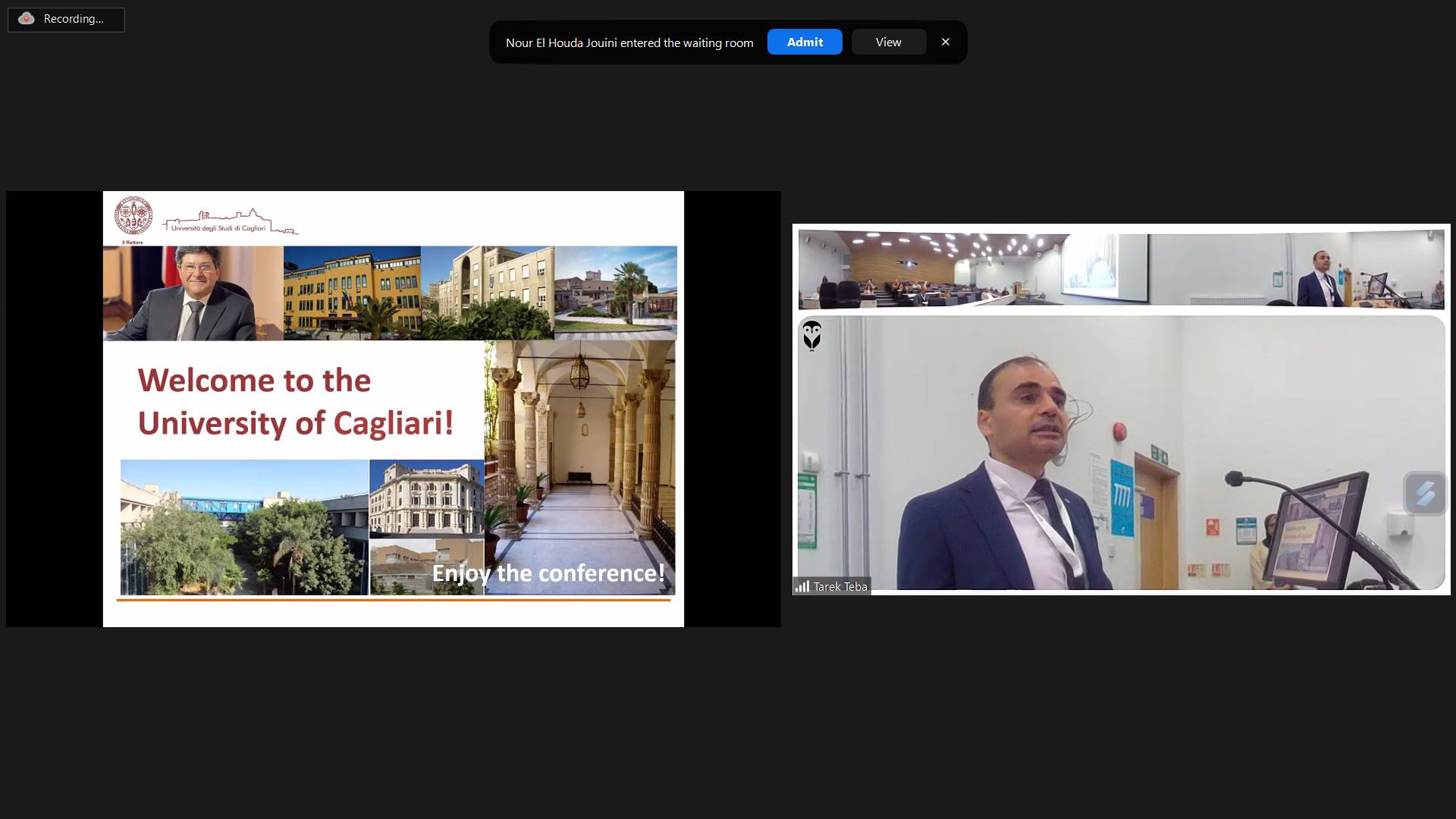
Day 2:
The 2nd day of the conference started at 9:30 am on the 13th of September ’23 with a short welcoming session then introducing the third keynote speaker Prof. Alessandra Battisti, Professor of Environmental Design and Technology of Architecture at the School of Architecture of Sapienza University of Rome, Italy, whose speech was entitled: “The Impact of Climate Change on Cultural Heritage: risks, resources and sustainable strategies.”
The first session of the day titled “Concepts, Methods, and Technology Used in Sustainable Heritage Asset Conservation” and moderated by Dr. Antonino Di Raimo, From the University of Portsmouth, UK, and Prof. Giovanna Concu, from the University of Cagliari, Italy. A diverse set of authors from around the world presented their research physically and took questions from both, live, and online attendees. Following the this session, a short lunch break was issued, and the second session of the day was set to begin soon after.
The second Session began shortly after the lunch break, entitled “Sustainable Design and Regeneration Practices for Architectural and Urban Heritage” and was moderated by Dr. Tarek Teba, and Dr. Antonino Di Raimo From the University of Portsmouth and a Questions and Answers session followed.
Following the Q&A session, The Hotwalls Studios Tour started, this tour introduced participants to the new sea defense scheme that is an ongoing project. Participants haf the chance to walk over the new and then the old sea defense structure with views to the sea, Isle of Wight and Gosport. After that, participants introduced to the Hotwalls Studios project, an adaptive reuse scheme and a conversion from historic fortifications to Hotwalls Studios. The project Architect Deniz Beck, who has notable experience with other prominent adaptive reuse projects in the city such as Spitbank Fort, and Fort Cumberland, will lead the onsite explanation of the project. The tour ended at the waterfront of Old Portsmouth with an evening view to the sea.
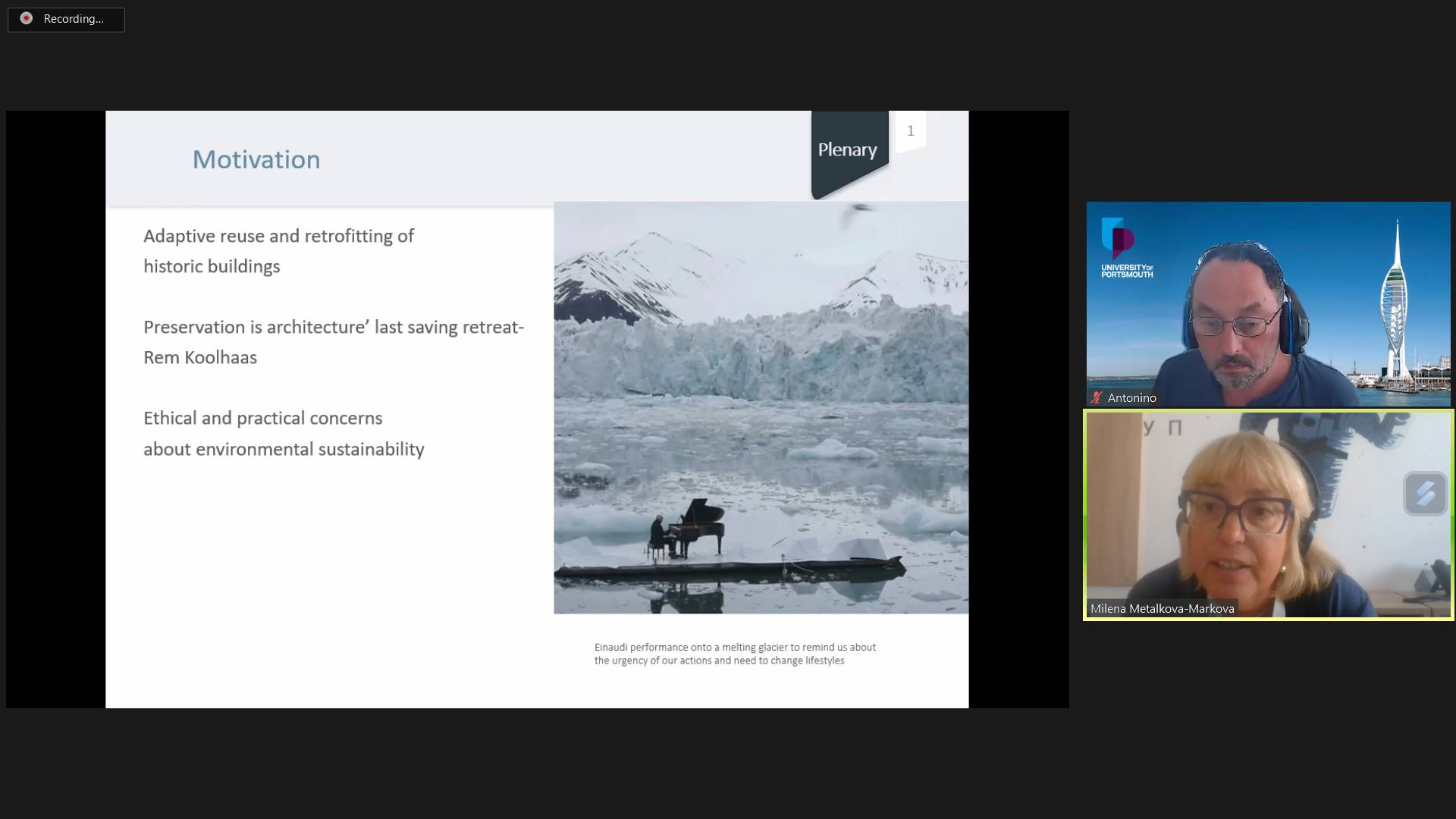
Day 3:
The 3rd day of the conference started online at 9:00 am on the 14th of September ’23 with a short welcoming session then introducing the fourth keynote speaker Prof. Khaldun Bshara, Assistant professor, Department of Social and Behavioral Sciences, Birzeit University, Palestine, whose speech was entitled: “Heritage Preservation in the Global South (the case of Palestine): From Luxury to Necessity”

The first session of the day titled “The Concept of Heritage Sites, their Conservation and Sustainable Adaptation” and moderated by Dr. Antonino Di Raimo, From the University of Portsmouth. A diverse set of authors from around the world presented their research online and took questions from both, live, and online attendees. Following the this session, a short lunch break was issued, and the final session of the day was set to begin soon after.
The final Session began shortly after the lunch break, entitled “Concepts, Methods, and Technology Used in Sustainable Heritage Asset Conservation” and was moderated by Dr. Tarek Teba, and a Questions and Answers session followed.
Wrapping up, final remarks, and a closing ceremony were held, and the conference was concluded after feedback was discussed in a panel session.
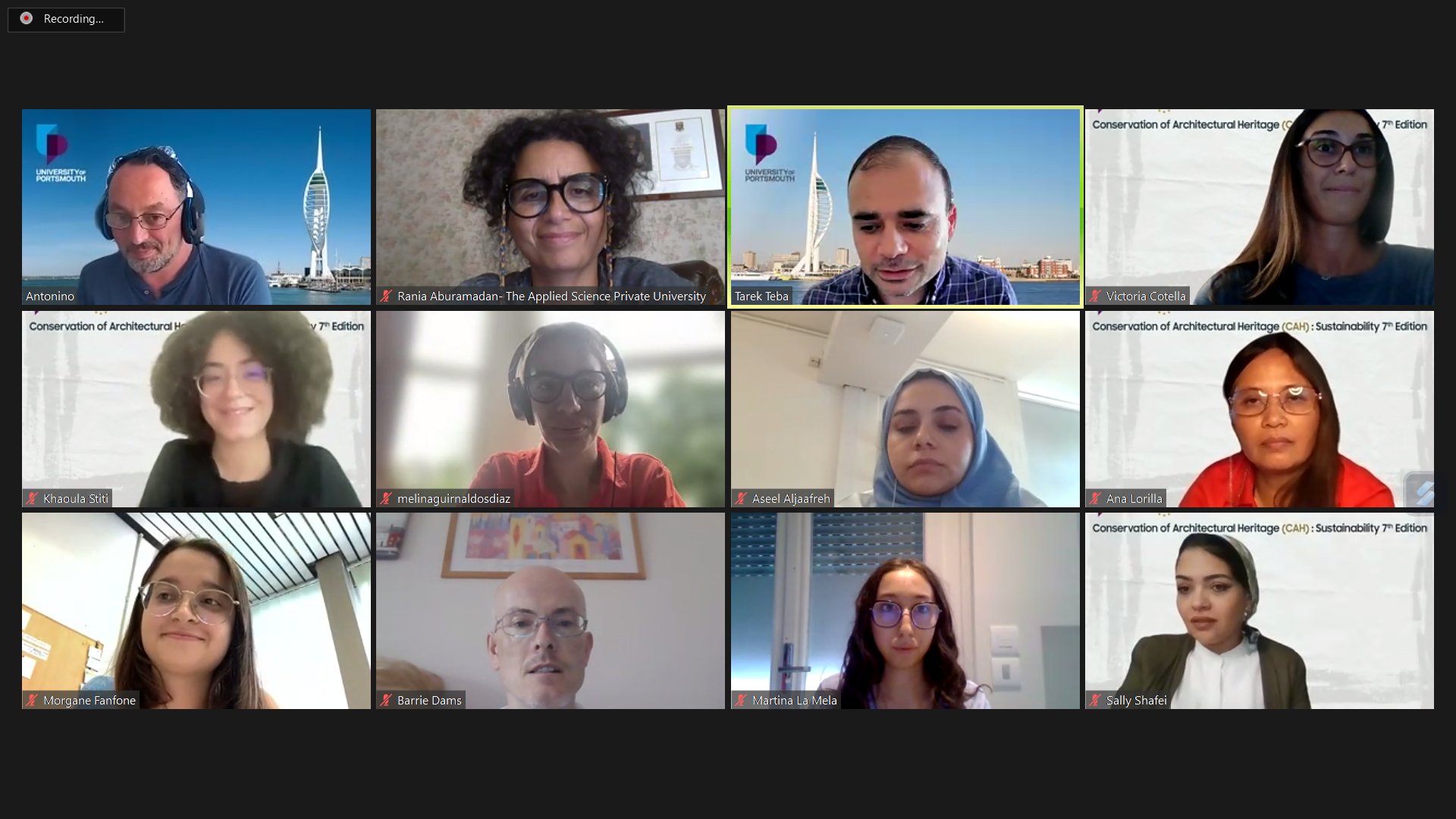 We are proud to have received such innovative contributions and are filled with excitement.
We are proud to have received such innovative contributions and are filled with excitement.
In the face of man’s disregard towards environmental resilience and sustainability, the United Nations have established the 17 Sustainable Development Goals (SDGs) to attempt to quell mankind’s undue influence on nature. Amongst these goals is SDG 11 which calls for making cities and human settlements inclusive, safe, resilient, and sustainable. More specifically, its subgoal, SDG 11.4, calls for strengthening efforts that protect and safeguard the world’s cultural and natural heritage. Furthermore, SDG 4 calls for quality education, which can facilitate the induction of cultural values under the umbrella of sustainability.
Effectively enriching the discourse on sustainability, cultural heritage research will employ techniques and methodologies that contribute to the arts and humanities, creative practices, along with sciences, technology, and engineering. The field of heritage studies aims to archive and preserve the histories of nations, represented in architectural construction, cultural traditions, monuments, landscapes, and more. Heritage itself, and more specifically, architectural heritage, attains links with the environment, as a result, heritage conservation efforts play a significant role in sustainable practice.
We are used to associating the term “Heritage Conservation” with the maintenance and continuity of historic landmarks, artifacts, and sites. However, contemporarily, the term is taking on a new form of understanding in the current era. Events such as political conflicts, natural disasters, and wars showcase geographies where the human factor results in urban displacement. These events necessitate a discussion and engagement on contemporary approaches and methodologies that go about dealing with these issues, and demand thorough consideration of heritage through the lens of social, environmental, and economic sustainability.
Putting the spotlight on heritage studies, IEREK is organizing the 7th “Conservation of Architectural Heritage (CAH): Sustainability” international conference. The conference will be held in collaboration with the University of Portsmouth, UK. It will serve as a primary forum for discussion on the topic of architectural heritage and its relations to sustainability, links to the environment, conservation efforts and techniques, management methodologies, novel innovations and technologies, and more. We encourage inputs from both theoretical and practice platforms. We aim to link theories to practice, and vice versa along with multidisciplinary and interdisciplinary approaches.
Scope
The 7th edition of the “Conservation of Architectural Heritage (CAH): Sustainability” conference comprehensively covers the topic of heritage conservation & maintenance against degradational factors. Additionally, it aims to bring the topic of conservation within the umbrella of sustainability, discussing the relations between cultural heritage preservation and sustainable development. It envelops sustainable methods of conservation of both, tangible heritage sites in the form of historical architectural landmarks, and intangible aspects of heritage, touching upon the significance of cultural heritage, and the economic impact that its conservation brings. Encompassing various methods of heritage preservation, the conference also covers citizens’ roles in the process, as well as governmental policy implementation & NGOs’ role in the process, in addition to tourism’s impact on heritage sites, and sustainable design methods & climate change adaptations.
1-1 Preservation of the architectural buildings
1-2 Benefits from the architectural heritage and sustainable adaptation
1-3 The governmental and NGO’s role in the conservation of the cultural heritage
1-4 Educating new generations about cultural and sustainable heritage
1-5 Sustainable adaptive reuse strategies
1-6 Heritage Building, Adaptive reuse and Environmental control
2-1 Museology and its Impact on Touristic Attraction and Economic Benefit
2-2 Natural and Environmental Heritage and its Role in Culture
2-3 Contemporary Artistic Representations of Heritage
2-4 Political Conflicts and Community Engagement in Forming Heritage
2-5 Communal Sense of Places Belonging and Engagement
2-6 Critical Heritage Studies and the Legacy of Nations
3-1 Significance of cultural heritage and socio-economic value
3-2 Value of heritage Sites to residents and their sense of belonging
3-3 Tangible archaeology and its architectural sites
3-4 Intangible cultural heritage assets
3-5 Rural Heritage (Tangible and Intangible assets)
4-1 Community investment in heritage preservation
4-2 Restoration in the construction reduction
4-3 Tourism for cultural heritage and sustainable tourism practices
4-4 Sustainable Governance's strategies for maintaining and investing the assets of the past
4-5 Historical Landscapes as Cultural Heritage
5-1 Historic highlight of the reconstruction and conservation of some heritage site
5-2 Promotion of Heritage and History in Culture and the Public Eye
5-3 Social participation in the protection plan
5-4 The effective role of women in the conservation ethics group process
5-5 Raising awareness about the preservation value of architectural heritage
6-1 New materials, innovative methods, and successful creative experiments
6-2 Innovative and sustainable technological methods for preserving and mapping ancient monuments
6-3 Non-Destructive Assessments of Decay Processes
6-4 The usage of rays, ultrasounds, and new techniques in the conservation process
6-5 Preservation of artistic artwork, and Interior heritage site
6-6 Digital Heritage and the Incorporation of Mapping, Photogrammetry and Gamification Techniques
6-7 Creative Practices and the preservation of tangible and intangible heritage
7-1 Post Crisis Architectural and Urban Conservation
7-2 Post crisis heritage regeneration
7-3 Dark Heritage/ Difficult Heritage conservation and management
7-4 Community role in regenerating heritage during crisis
7-5 Refugees ephemeral heritage and Heritage Mobility
8-1 Sustainability impact assessment
8-2 Solutions for green restoration
8-3 Adaptation to climate change
8-4 Long term strategy and awareness campaigns
All accepted submissions to the conference, after a rigorous double-blinded peer-review process by the respective and a highly-extinguished Editorial Board, will be published in one of the following:
 Advances in Science, Technology and Innovation (ASTI), an IEREK Interdisciplinary book series published by Springer Nature. (Scopus indexed)
Advances in Science, Technology and Innovation (ASTI), an IEREK Interdisciplinary book series published by Springer Nature. (Scopus indexed) About ASTI
Advances in Science, Technology & Innovation (ASTI) is a series of peer-reviewed books based on important emerging research that redefines the current disciplinary boundaries in science, technology and innovation (STI) in order to develop integrated concepts for sustainable development. It not only discusses the progress made towards securing more resources, allocating smarter solutions, and rebalancing the relationship between nature and people, but also provides in-depth insights from comprehensive research that addresses the 17 sustainable development goals (SDGs) as set out by the UN for 2030.
The series draws on the best research papers from various IEREK and other international conferences to promote the creation and development of viable solutions for a sustainable future and a positive societal transformation with the help of integrated and innovative science-based approaches. Including interdisciplinary contributions, it presents innovative approaches and highlights how they can best support both economic and sustainable development, through better use of data, more effective institutions, and global, local and individual action, for the welfare of all societies. The series particularly features conceptual and empirical contributions from various interrelated fields of science, technology and innovation, with an emphasis on digital transformation, that focus on providing practical solutions to ensure food, water and energy security to achieve the SDGs. It also presents new case studies offering concrete examples of how to resolve sustainable urbanization and environmental issues in different regions of the world. Read More.
The ASTI series is fully indexed in Scopus and any chapter/ paper published as part of this series will be seen on the Scopus database. Some titles have been successfully indexed or submitted for indexation in Web of Science (ISI).
A special issue at the International Journal on
|
|
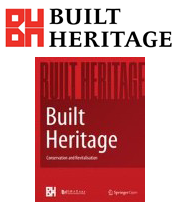 |
About Built Heritage Journal
Built Heritage aims to enhance pluralism and criticism in debates on heritage conservation and revitalization with a globalized perspective. The conceptual basis of this refereed journal lies on the fundamental cultural differences concerning built heritage conservation, recognizing these differences as a source for creativity and a motivation for cutting-edge experimentation. It fosters scientific exchange between Chinese and international scholars and practitioners, offering a platform to record the latest developments in the field. Encouraging international authorship and evaluation, it allows for the homologation of research and practice with regards to cultural diversity.
Built Heritage promotes the awareness for built heritage conservation in China and internationally, inviting scholars to reflect on current hot topics discussions as: the role of contemporary architecture in historic environments; the balance between conservation and development; new tools of heritage management; policy, culture and identity; energy consumption and sustainability.
 IEREK Press Journals, a multidisciplinary publisher that aims to cultivate and disseminate research.
IEREK Press Journals, a multidisciplinary publisher that aims to cultivate and disseminate research.
ESSD is a peer-reviewed, scholarly journal that aims to systematically develop the research-driven curiosity and evidence-based discourse of aspiring scholars that seek to contribute to the academic community. As the world is currently living in an age of information where sources are widely available on the Internet, we at ESSD seek to efficiently utilize the available information to help create robust and evidence-based knowledge. In the process, we offer researchers, in general, and young and aspiring ones in particular a quicker way to get their work published and gain exposure through online open access. We pride ourselves on getting submitted work to be published quickly, through the use of our worldwide pool of subject specialist peer reviewers. Find out more about ESSD International Journal here.

ARChive is an open-access journal that publishes conference proceedings on a wide range of topics relating to social sciences. Consequently, it accepts original research papers on a wide spectrum of subjects. ARChive is a journal published on behalf of researchers that perpetually make an effort to contribute to their fields and provide them with high visibility of research submitted. The series publishes, both, theoretical and experimental high-quality papers of current and perpetual interest. It serves to cultivate, propagate, and essentially archive academic research that has been authored and submitted for academic conferences.
Find out more about ARChive International Journal here.

Resourceedings is an open access journal that publishes conference proceedings. Conference proceedings compromise of different disciplines, ranging from Engineering including built environments, architecture, and sustainability. Disciplines also include Technology and Energy. Resourceedings is a journal that publishes research articles that shed light on different crucial issues in order to provide them with solutions and suggestions. The journal publishes articles submitted by researchers of interest in different fields.
Find out more about Resourceedings International Journal here.
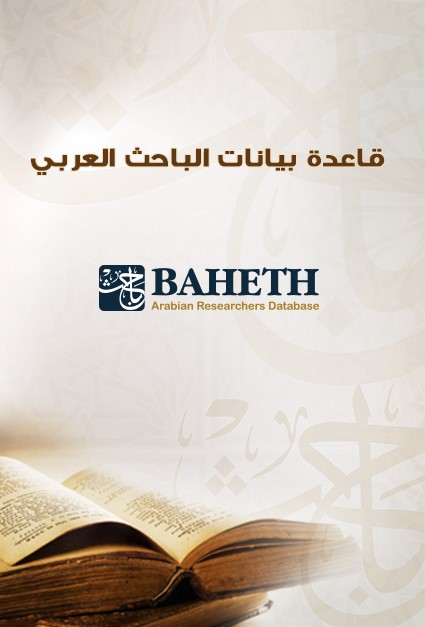
“BAHETH” in Architecture, Engineering, and Technology, is a peer-reviewed journal that publishes original academic research in the fields of Architecture, Engineering, and Technology. The journal welcomes research in the Arabic Language with an English Abstract. Papers submitted to this journal in Arabic must be presented in the English Language in the conference.
Find out more about BAHETH International Journal here.

Degree in Building Engineering (University of Messina, Italy) and a Ph.D. in Architecture (University of Paris VIII, France). After being UNESCO international staff member, in charge of numerous cultural projects in South-Eastern Europe until 2008,
she is currently a researcher and an assistant professor at the Faculty of Engineering and Architecture of the University of Enna “KORE” and associate researcher at Ipraus (Paris Research Institute: Architecture, Urbanism, Society), Paris-Belleville National School of Architecture.
Since 2013, she is a member of SIRA, the Italian Society of Architectural Restoration. In 2018, she obtained the habitation as Associate Professor according to the Italian National Scientific Qualification procedure.

Ph.D. in “Building Engineering: Restoration Design”, assistant professor and research on Digital Drawing at the School of Engineering at the University of Bergamo and Head of the laboratory lab_SABE (Survey & Analysis of Buildings and Environment). His research interests are related to the themes of 3D survey for the conservation of cultural heritage, architectural and urban restoration, implementation and development of new technologies for the survey, documentation, and conservation of architectural and monumental heritage (3D laser scanning, 3D image-based modeling, 3D data processing, reverse engineering), digital drawing and representation of historical and contemporary buildings.
Registration
To help the organizers plan for inter-disciplinary dialogue, participants are requested to choose from the conference themes/ Topics upon registration.
They must also refer to, and abide by, the following instructions in registering and submitting their abstracts/ papers:
Types of Participation
Organized from the comfort of your own home, the conference offers a virtual attendance option for your convenience. That said, participants will have a chance to present their abstract/research, online, and have their work considered for publication in the proceedings.
Virtual presenters are required to submit an abstract and extend this abstract following the “author instructions” below and before the deadline (see Important Dates). At least one author must pay the registration fee (see Conference Fees).
For any reason, authors may wish to submit pre-recorded video presentations no later than 15 days prior to the conference. Alternatively, they may wish to record a voice-over PowerPoint presentation for submission to the conference organizers.
Organized at the University of Portsmouth, UK, offering a Physical attendance option for your convenience. That said, participants will have a chance to present their abstract/research, on campus, and have their work considered for publication in the ASTI Series by Springer as part of the conference proceedings.
See Author Instructions and Conference Fees for more information.
If your extended abstract (short paper) is accepted, it may be published in the conference proceedings book in the Advances in Science, Technology & Innovation Book Series by Springer (indexed in Scopus) even if you are not attending the conference. In this case, the accepted work will not be included in the final conference program and the fee will cover the cost of editorial handling and peer-review evaluation of your paper (See Author Instructions and Publishing Opportunities)
Non-presenting participants may also wish to attend the conference as Audience Members or Co-authors contributing to an already submitted abstract/ paper.
IEREK has an unyielding policy regarding plagiarism. We believe that copying/taking the ideas and work of other Authors without permission and credit is fraudulent. The Reviewing committee and IEREK employees have the authority to reject a paper during its reviewing process, based on the paper being subjected to either minor or major plagiarism.
Authors must refer to, and abide by, the following instructions in submitting their abstracts/ papers:
This is not a prerequisite for presenting your work at the conference. Meaning, you can present your submitted abstract without intending to publish your work.
This process can only be initiated after payment completion and confirmation:
To download Conference presentation Template, Click Here
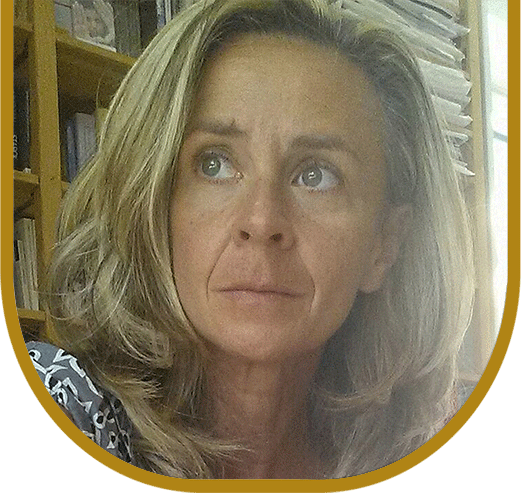
A practicing architect, she is full Professor of Environmental Design and Technology of Architecture at Sapienza University of Rome, where she was Head of the Master’s programs in “Landscape Architecture” (from 2016 to 2019) and Head of the Master’s programs in “Architecture-Urban Regeneration” (2019) and serves as the Director of the level-2 Master’s program in “Valorisation and Enhancement of Small Historical Centres” (2013 to the present). She is on the Faculty Board and teaching staff of the Ph.D. program in Planning Design Technology of Architecture (since 2013).
Since 1993 she has been engaged in research, teaching and experimentation on topics such as technological innovation for environmentally aware architecture, the ecological and energetic efficiency of buildings, the bioclimatic approach to design and urban regeneration. She has expertise, at the European level, in sustainable architecture, renewable energy in buildings and how these relate to the construction and regeneration of existing urban and architectural spaces. An expert consultant for the European Community – DG XXII – on energy in the building sector and energy efficiency in Cultural Heritage. Member of the Work Group on Energy Efficiency of the Cultural Heritage of the Italian Ministry of Culture and Tourism (2015). Expert evaluator for MIUR and EU: Horizon and COST. Newton Price Evaluation Expert on behalf of the UK National Commission for UNESCO (since 2020). Expert member of the National Table ""Policy for Architecture and Cities"" of the General States of the Green Economy (2015-ongoing).
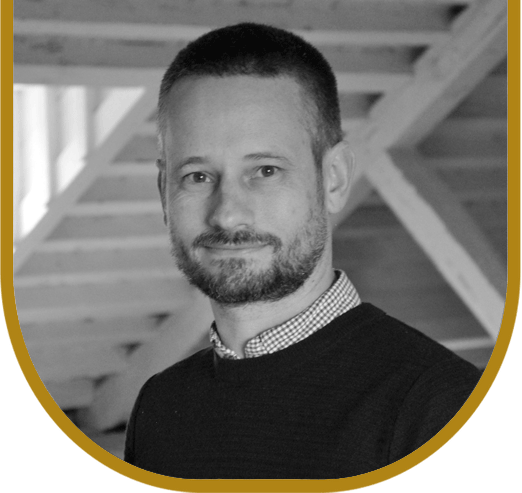
He has over 25 years of experience as a Specialist Conservation Architect repairing and adapting many listed buildings and scheduled monuments. Many of his projects have won awards and been published and commended widely. Giles studied at Portsmouth University where he completed both his degree and diploma under the guidance of Sir Colin Stansfield-Smith. He went on to work at several conservation practices before working at Hampshire County Council Architects where he remained for 18 years. During this time he led the heritage architecture team and completed many exciting projects across the South East region involving the repair, alteration, and extension of listed buildings. In 2017 he set up Pritchard Architecture. Over his career, he has developed excellent working relationships with local councilors, conservation officers, and statutory bodies including the National Lottery Heritage Fund & Historic England. Giles has been appointed as retained architect to Portsmouth Naval Base Property Trust and is responsible for surveying the estate within Portsmouth Historic Dockyard. He is also an architectural advisor to the Diocese of Oxford DAC and is registered on the list of approved architects for Guildford Diocese. Previous roles have included Consultant Conservation Architect to Historic England, and South East Heritage at Risk Team. His extensive knowledge of the methodology and approach to historic buildings combined with his professional and thorough approach has earned him many plaudits from conservation officers and clients.
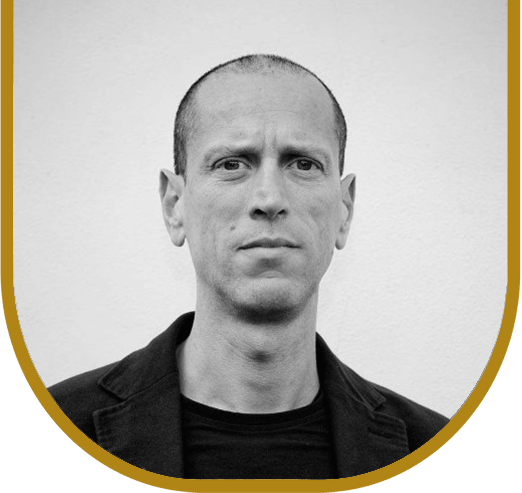
Graduated in 1993 in Architecture at the University of Architecture of Venice IUAV. He has been an adjunct professor at the University of Padua and a visiting professor at ENSTP Yaoundé Camerun and at UTPL Loja – Ecuador. Since 2020 he has been a visiting professor at the School of Architecture – University of Portsmouth – UK.
Co-principal of TAMassociati, Venice – Italy. The practice has won widespread recognition and numerous prizes: In 2013 the Aga Khan Award for Architecture, the international Ius- Ius-Capocchin Prize, and the Curry Stone Design Prize; in 2014 the Zumtobel Group Award; in 2017 the Lafarge-Holcim Awards Acknowledge Prize; in 2019 the Energy Globe Award. In 2014 TAM was named Italian Architect of the Year “for its ability to enhance the ethical dimension of the profession”. The practice is currently working in Rwanda, Uganda, Kenya, Tanzania, Yemen, Lebanon, Palestine, and Italy.
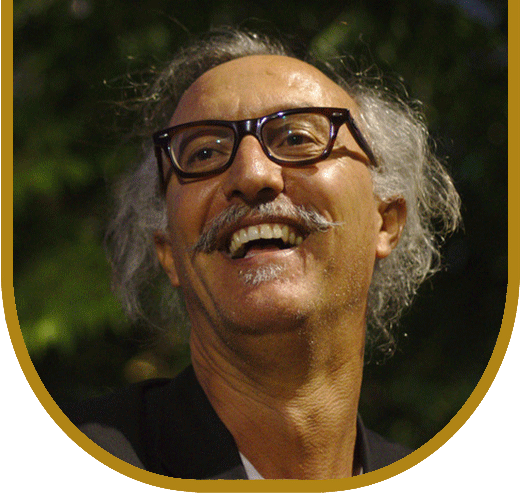
(Ph.D. in socio-cultural Anthropology) is an architect, restorer, and anthropologist. He has been lecturing as an assistant professor at the Department of Social and Behavioural Sciences at Birzeit University. He also serves as a senior advisor for Riwaq Centre, Ramallah, where he has worked since 1994 (and as a director between 2010-2020) in documenting, protecting, and restoring built Palestinian heritage. Bshara received his B.Sc. in Architectural Engineering from Birzeit University (1996) and his MA in the Conservation of Historic Towns and Buildings from the Catholic University of Leuven, Belgium (2000). Interested in space and memory, he joined the University of California, Irvine on a Fulbright Scholarship where he obtained an MA in Anthropology in 2009 and his Ph.D. in 2012. Bshara has been the editor of Riwaq’s Monograph Series on Architectural History in Palestine since 2010. He edited, authored, and co-authored numerous books and articles.

ORCID, which stands for Open Researcher and Contributor ID, is a global, not-for-profit organization that aims to provide unique identifiers for authors, researchers, and scholars. ORCiD effectively eliminates duplication and errors regarding author names, affiliations, previous works, and all related academic data.
IEREK is a proud member of ORCiD, and we contribute directly to their initiative of clear and identifiable markers for researchers and scholars. As the first Egyptian partner to ORCiD in the organization’s history, we strongly believe that by utilizing ORCiD’s database and verification services, we become one step closer to achieving an accurate, and identifiable academic landscape.
We encourage our authors to input their ORCiD ID when registering for one of our conferences, submitting an abstract, or a full paper. By doing so, you directly link your research to your identity and affiliation and can showcase your various academic efforts all in one place. By Registering your ORCiD ID, you also increase your works’ visibility and provide easy access to your entire library of research and academic activity.
Click here to learn more about ORCiD, and here to register your ORCiD ID for free.
Attending a conference dramatically enhances both your professional and personal development. They help you sharpen the saw, meet and converse with industry experts, expand your resources and grow your professional network. IEREK Conference will help you:
1. Open Discussions: We bring together leading academic scientists, from different universities and countries, to exchange and share their experiences and research results.
2. Internationally Accredited Certificate: The participants are granted internationally recognized certificates acknowledged by IEREK, the University, and Partnering Organizations.
3. Publication: Selected high-quality manuscripts will be published, after peer review, in the Advances in Science, Technology & Innovation (ASTI) book series by Springer or by IEREK Press Journals, both of which are indexed in world-renowned databases.
4. Research Technologies: Conferences can expand your resources by providing a great opportunity to promote gathered information on new technologies related to your research.
5. Networking: You can engage with industry experts to discuss with them the very latest research projects they could be working on and increase your chances of collaboration in future projects.
6. Academic Reputation: Attending many conferences will make you a known figure in academic circles and an active member of the academic community.
7. Conference Abstracts Material: Delegates will receive the conference Abstracts book in both hardcover and digital format on a CD. Shipping fees may apply.
| Title | Date |
|---|---|
| Abstract Submission Deadline (Final Round) | 10 Aug 2023 |
| Letter of Visa (for delegates who need visa entry) *payment required | 10 Aug 2023 |
| Last Notification for Abstract Acceptance & Approval to present | 20 Aug 2023 |
| Early Payment Deadline | 15 June 2023 |
| Regular Payment Deadline | 10 Aug 2023 |
| Extended Abstract / Short Paper Submission Deadline | 15 Oct 2023 |
| Notification of acceptance/ rejection of submitted extended abstract/ short paper | 15 Nov 2023 |
| Late Payment Deadline | 30 Aug 2023 |
| Conference Program | 16 Aug 2023 |
| Conference Launch | 12 Sep 2023 |
| Student | Academic | Professional | Deadline | |
| *ID must be shown | Affiliation must be provided | Affiliation must be provided | ||
| Author Participation (Consideration in the ASTI Book by Springer) | ||||
| Early Bird | 300 £ | 350 £ | 400 £ | 15 June 2023 |
| Regular Payment | 350 £ | 400 £ | 500 £ |
10 Aug 2023
|
| Late Payment | 450 £ | 500 £ | 600 £ | 30 Aug 2023 |
| Author Participation (Consideration in the IEREK Press Journal) | ||||
| Early Bird | 200 £ | 250 £ | 300 £ | 15 June 2023 |
| Regular Payment | 250 £ | 300 £ | 400 £ | 10 Aug 2023 |
| Late Payment | 350 £ | 400 £ | 500 £ | 30 Aug 2023 |
| Co-author/ Audience | ||||
| Regular Payment | 150 £ | 200 £ | 250 £ | 30 Aug 2023 |
| Author Participation (Consideration in the Journal of Namibian Studies) | ||||
| APCs will be directly to the journal. | ||||
| Additional Conference Kit (Excluding Delivery) *Contact us for a quotation on shipping fees. | 100 £ |
Loyalty Membership Discounts
The more you attend, the more you're rewarded!
IEREK offers its loyal participants with the following discounts depending on his/her attendance:
|
Attendance |
Second |
Third |
Fourth |
Fifth |
|
Discount |
5% |
10% |
15% |
20% |
*The aforementioned discounts are only applicable during Regular and Late Payment times. For more information, please refer to 'Important Dates'.
Payment Methods
Payment of the registration fee can be made via the following methods (only after online registration):
1. Bank transfer
Kindly send a request to the conference coordinator/ email and CC [email protected] to receive bank details to complete the payment.
2. Online payment gateway (PayPal)
Participants who would like to complete their payments online must send a request to the conference coordinator/ email and CC [email protected] to receive a customized link to complete their payments.
3. Cash in IEREK branches
Payment in person can be arranged. Please contact the conference coordinator/ Email to receive further information.
Payment Terms and Guidelines:
The Confirmation/Payment Completion period will take place from 30 May 2023 to 30 August 2023. Early bird/ early payment discounts are available till June 2023. Read more on Important Dates. For information on payment dates, kindly send a request to the conference coordinator/email and CC [email protected] to receive payment details to complete the payment.
Authors who have registered and completed payment for virtual attendance CAN request a change to physical attendance. However, a change from physical to virtual is NOT possible.
After online registration and payment, the registration fee cannot be reimbursed.
Final Acceptance/ rejection of your full/ extended paper (if submitted) can only be given after the peer review process.
Inclusion in the conference program, acceptance letters issuance and consideration for publication must be preceded by registration and payment completion.
Online Payment (only) should only be completed once a proforma invoice is issued with respective instructions for successful payment.
Contact our Financial Department for inquiries/ requests.
The 7th edition of the International Conference on Conservation of Architectural Heritage (CAH): Sustainability will be held in collaboration with University of Portsmouth, UK.
The University of Portsmouth is a modern higher education and research institution in Portsmouth, England. It is one of only four universities in the South East of England rated as Gold in the Government's Teaching Excellence Framework.
Land
1-Train
The closest station is Portsmouth and Southsea. It’s a 5-minute walk from the buildings on our Guildhall campus.
There are daily direct trains from London Waterloo and London Victoria (2 hours), and regular services from Southampton, Bournemouth, Chichester and Brighton. We’re only a 2-hour journey away from Bristol too.
You can plan your route with National Rail or Trainline.
2-Car
Take the M275 into Portsmouth (signed 'Portsmouth West') whether approaching from the east (A3(M)/A27) or the west (M27 Junction 12). Ignore the junctions signed to Southsea and Hilsea.
3-Taxi
If you're travelling to Portsmouth from one of the major London airports, taxis are fairly expensive, costing between £100 and £200. For this reason, we don't recommend taking a taxi for your journey. If you do choose to take a taxi, you should book it in advance to get the best offers possible. Once you arrive in Portsmouth, taxis are common and journeys will generally cost no more than £15 to £20.
Coach
Regular daily direct coach services run to Portsmouth from London, Bristol, Birmingham, Heathrow and other locations around the country.
All these services call at The Hard Interchange by Portsmouth Harbour railway station, which is a 15-minute walk from our Guildhall campus.
You can find out coach times and routes with National Express and megabus.
Air
From London: for all international connections, we’re only 1 hour 30 minutes from both Heathrow and Gatwick airports.
From Southampton: Southampton International – which has regular flights to Paris, Cherbourg, the Channel Islands, Belfast, Glasgow and more – is just 30 minutes by car and easy to reach by train too.
Sea
There are daily sailings between Portsmouth and Caen, Le Havre and St Malo in France. There are also twice-weekly services to Bilbao and Santander in Spain, and regular services to Jersey and Guernsey.
There are crossings each day to the Isle of Wight too, by Hovercraft, passenger catamaran, and passenger/car ferry. A passenger ferry also runs across the harbour to Gosport.
Local bus services
Portsmouth University bus is available during term-time. The circular route runs from Monday to Friday, close to where many students live in Southsea.
Portsmouth has excellent city bus services too. You can catch local and intercity buses from the main bus station at The Hard Interchange, next to Portsmouth Harbour railway station. There is also a park and ride from the M275 terminal with stops in the centre of the University campus.
Bike or foot
Portsmouth is fairly flat and there's plenty to see, so the best way to discover the city is on foot or by bike. You’ll find plenty of footpaths and cycleways to follow across the city.
Whether you’re looking for information about local cycle routes, walking maps, or links to public transport you can plan your journey using My Journey Portsmouth.
|
Cancellation Policy |
Up to 60 days before the event |
Up to 50 days before the event |
Up to 40 days before the event |
39 days before the event |
|
Penalty |
20% |
50% |
70% |
100% |
EXCEPTION
A refund is not possible if
-An acceptance letter has been issued (Authors only)
-The proceedings of the event have been published (Authors only)
-All matters have been finalized (accommodation/travel expenses paid for)
Visa Rejection Cases
Reason and proof of rejection must be submitted. If the reason for rejection is due to an error on our part, the participant will be refunded their full fee with a deduction of a 20% administration fee.
Documents to be issued by IEREK to acquire a visa are as follows:
*Final Acceptance Letter (Authors only)
*Visa Invitation Letter
*Invoice/proof of payment
We encourage all authors and attendees to ensure their having acquired all documents (those applicable) mentioned.
If the reason for rejection is not related to any of the aforementioned and is an error on the participant’s part, the following will apply:
*Authors: may choose to let their co-author present his/her research on his/her behalf free of charge. If the author does not have a co-author, a member of the scientific committee shall present on the author’s behalf.
*Audience members/Registrants: will only be allowed to attend another similar event of their choosing that is organized by IEREK free of charge.
The International Conference on Conservation of Architectural Heritage was held aboard the Grand Palm Nile Cruise, for 5 days, which had sightseeing trips for the historical, cultural, and architectural sites. As well as holding of the “Folk Art Gallery” by Amr Bayoumi & Ola Bayoumi. The conference was chaired by Professor Douglas C. Comer (the Co- president of ICAHM for ICOMOS.) and organized by IEREK.
The opening session was held onboard the Nile cruise right after the arrival of the delegates and the visit of Luxor temple, which was opened by a welcoming word from the CEO of IEREK. It was then followed by Prof. Douglas C. Comer (the Co- president of ICAHM for ICOMOS.), Prof. Ahmed Rashed (former head of Architecture Department at the British University in Egypt, and the founding director of (CSFS)), Prof. Antonella Versace (Professor at University Kore of Enna, Italy), and finally Mr. Mohamed Badr (Governor of Luxor).
After an introduction about the conference and its delegates was made, the conference officially started with the sessions.
The plenary session titled “Development and Promotion of the Architectural Heritage through Tourism Forms” was run by the following professors:
– Prof. Douglas Comer (Principal, Cultural Site Research and Management, Inc. “CSRM” & Conference Chairman)
-Prof. Antonella Versaci (Kore University of Enna, Italy & Scientific Coordinator of the Conference)
-Prof. Ahmed Rashed (British University in Egypt “BUE”)
-Dr. Monica Hanna (American University in Cairo “AUC”, Egypt)
-Dr. Mohammed Assem Hanafy (University of Alexandria, Egypt)
-Hamdy Elsetouhy (Researcher and Specialist in Conservation)
The first day included a guided tour to Luxor temple. Later there was an optional trip to the light and sound show at Karnak Temple.
On the second day, the delegates moved to the west bank of Luxor to visit the Colossi of Memnon, Hatshepsut’s Temple, as well as an Alabaster factory and bought some alabaster-made souvenirs. Later, there was an optional trip to the Valley of the Kings.
The third day included a visit to Edfu temple in Edfu city, followed later by a visit to Kom Ombo temple when the Nile Cruise reached the city of Kom Ombo. The fourth and last day was spent in Aswan where visits were made to the High Dam, a modern-age site, followed by a visit using motor boats to Philae Temple on Agilkia Island. Following that, the attendees were given the option to visit the botanical island and a Nubian village.
Check this conference’s overview here:
https://www.ierek.com/events/conservation-architectural-heritage-cah#overview
The 2nd International conference on the Conservation of Architectural Heritage in Egypt has been successfully held in Aswan: one of the most significant historical cities existing today.
This conference witnessed the attendance of planners, environmentalists, archeologists, architects, engineers, tourists, policy makers and stakeholders who are interested in the conservation of architectural heritage. Having been filled with participants from diversified fields, approximately 80 full paper submissions were received and 50 of them were presented over several sessions.
Authors attending came from different backgrounds and cultures to discuss research on the conservation of archaeological, architectural and urban landscapes, and multi-disciplinary research on complex Cultural Heritage sites. Held on a Nile Cruise that Sailed from Aswan to Luxor, the conference was attended by authors from Australia, Kuwait, Lebanon, Saudi Arabia, Greece, Egypt and more. With Professor Douglas C. Comer, an archaeologist and the co-president of the United States Committee for ICOMOS (US/ICOMOS), as the Chairperson of the conference, promising conclusions have been reached and recommendations made.
The first day included a guided tour to Luxor temple. Later there was an optional trip to the light and sound show at Karnak Temple.
On the second day, the delegates moved to the west bank of Luxor to visit the Colossi of Memnon, Hatshepsut’s Temple, as well as an Alabaster factory and bought some alabaster-made souvenirs. Later, there was an optional trip to the Valley of the Kings.
The third day included a visit to Edfu temple in Edfu city, followed later by a visit to Kom Ombo temple when the Nile Cruise reached the city of Kom Ombo. The fourth and last day was spent in Aswan where visits were made to the High Dam, a modern-age site, followed by a visit using motor boats to Philae Temple on Agilkia Island. Following that, the attendees were given the option to visit the botanical island and a Nubian village.
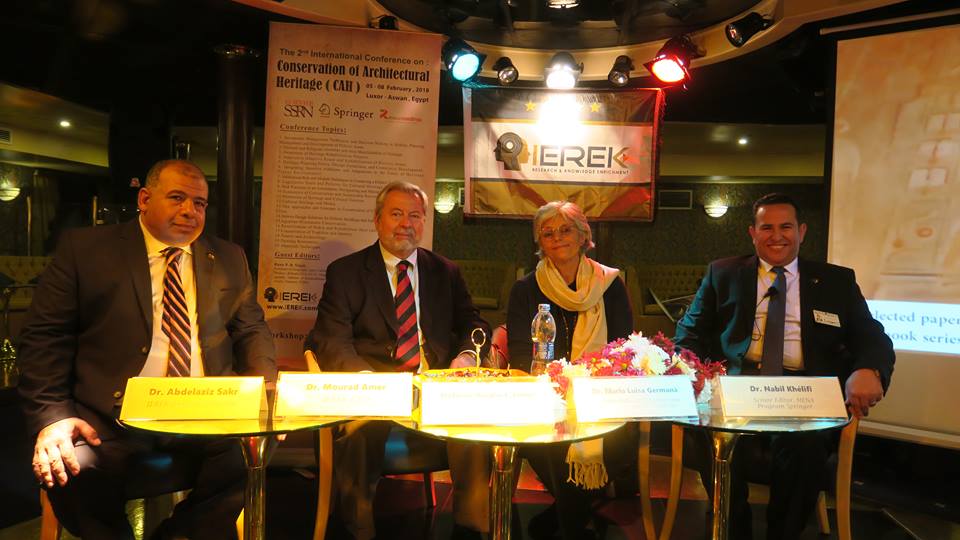
Check this conference’s overview here:
https://www.ierek.com/events/conservation-architectural-heritage-cah-2#overview
The 3rd International Conference on “Conservation of Architectural Heritage (CAH)” was held from on 19th to 22nd of February 2019 in association with Faculty of Engineering at Shoubra - Benha Unversity. The conference included many discussions, covered extremely important topics, and presented new scientific values in the scope of conserving the architectural heritage. For the third time, it was a very successful conference that cannot be forgotten.
The international conference was held in Aswan, Egypt, specifically at The Nubian Museum, which is considered to be a gateway to the history of Nubia and one of the most attractive touristic sites in Aswan.
This year, the conference was held under the patronage of Dr. Khaled Abdel Ghaffar (Minister of Higher Education and Scientific Research), Prof. Hussein El-Maghraby (President of Benha University), and The Supreme Council of Antiquities. It was also chaired by Prof. Ragab Megahed (Dean of Faculty of Engineering at Shoubra - Benha Unversity).
First Day: Opening Ceremony and Keynote Speeches
The opening ceremony started with greetings and short-introductions by:
Prof. Tarek Tawfik, General Director of the Grand Egyptian Museum
Prof. Ferdinando Trapani, Associate professor in Urban Planning, Università degli Studi di Palermo, Italy
Prof. Francesco Alberti, Associate professor of Urban planning and design at University of Florence, DIDA - Department of Architecture
Prof. Hussein El-Maghraby, President of Benha University
Dr. Abdel Moneim Saeed, General Director of Aswan and Nubian Antiquities
Dr. Ossama A.W Abd El Maguid, The Head Director of Nubia Museum
The opening ceremony witnessed highly-important speeches especially by the 2 Italian professors Ferdinando Trapani & Francesco Alberti who stressed on the necessity of collaboration and knowledge exchange between Egypt & Italy in the scope of conservation and preservation. The professors also presented the model of "conservation of heritage in Palermo" at the conference, which is considered a living example of exchanging knowledge between 2 great civilizations.
After the lunch break, authors (researchers) started to present a demo of their research paper in oral presentations while session chairman and moderators listen, discuss, and evaluate.
Second Day: The Parallel Sessions Continued & Start of the Workshop
Starting from the 2nd day, remaining authors (researchers) continued presenting their research papers while other participants (students) joined the accompanying workshop titled “Site Management of The Archaeological Sites”.
This workshop examined the interchangeable relationship between the archaeological sites and the historic monuments, and how they affect each other.
At the Nubian Museum, the workshop students obtained great lectures by well-known professors from the University of Benha, such as Prof. Khaled Abd El Hady, Prof. Mostafa Atalla, Prof. Amr Hanafy, Dr. Mona yehia, and Prof. Sadek Saad.
Third Day: Workshop Continued & Site Visit
The day started early with a tour visit to The Unfinished Obelisk (The largest known ancient obelisk and is located in the northern region of the stone quarries of ancient Egypt in Aswan), where a lecture was given by Prof. Khaled Abd El Hady, in addition to group work with participants.
Another tour visit to Temple of ISIS was also organized. Moreover, after lunch, the last visit was made to The Temple of Kom Ombo where all workshop participants enjoyed the scenes and gained a lot of knowledge about heritage in Egypt.
Fourth Day: Pin Up Presentation
At The Nubian Museum, many discussions and group work feedback have taken place regarding what they have seen and learned through this conference and accompanying workshop.
Finally, group photos of all conference participants were taken.
Check this conference’s overview here:
The 4th International Conference on the Conservation of Architectural Heritage in Egypt has been successfully held in Aswan: one of the most significant historical cities existing today.
This conference witnessed the attendance of planners, environmentalists, archeologists, architects, engineers, tourists, policymakers, and stakeholders who are interested in the conservation of architectural heritage. Having been filled with participants from diversified fields, approximately 60 full paper submissions were received and 30 of them were presented over several sessions.
Authors attending came from different backgrounds and cultures to discuss research on the conservation of archaeological, architectural and urban landscapes, and multi-disciplinary research on complex Cultural Heritage sites. Held on a Nile Cruise that Sailed from Aswan to Luxor. The conference was attended and moderated by the Stella kostopoulou from the Aristotle University of Thessaloniki (AUTh), Greece.
It was also moderated by:
Fabio Pollice from the University of Salento, Lecce, Italy.
Ferdinando Trapani from the University of Palermo, Palermo, Italy.
Luca Lanini from the University of Pisa, Pisa, Italy.
The first day was spent in Aswan where visits were made to the High Dam, a modern-age site, followed by a visit using motorboats to Philae Temple on Agilkia Island. Following that, the conference opening ceremony.
The second day included a visit to Kom Ombo temple when the Nile Cruise reached the city of Kom Ombo followed later by a visit to Edfu temple in Edfu city,
The third day included a guided tour to the Luxor temple and Karnak Temple.
On the last day, the delegates moved to the west bank of Luxor to visit the Colossi of Memnon, Hatshepsut’s Temple, as well as an Alabaster factory and bought some alabaster-made souvenirs. Later, a trip to the Valley of the Kings.
Check this conference’s page here:
For IEREK's Previous Publications, Please Click here
- Conservation of Architectural Heritage (CAH) held on a Nile cruise from Luxor to Aswan in November 2015.

- Conservation of Architectural Heritage (CAH) -2nd Edition held on a Nile cruise from Aswan to Luxor in February 2018.


- Conservation of Architectural Heritage (CAH) -3rd Edition held at the Nubian Museum, Aswan in February 2019.


- Conservation of Architectural Heritage (CAH) -4th Edition held on a Nile cruise sailing from Aswan to Luxor in February 2020.

- Conservation of Architectural Heritage (CAH) - 5th Edition held as an Online Conference in February 2021.
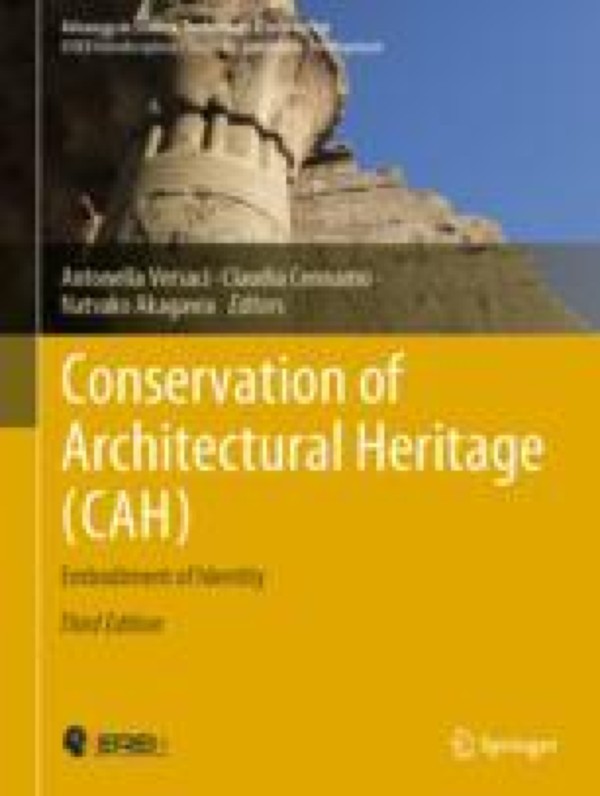
- Conservation of Architectural Heritage (CAH) - 6th Edition held as a Hybrid Conference in collaboration with Palermo University, Sicily, Italy in May 2022.

- For participants who need Entry Visas to the country where the conference will be held, IEREK will issue the corresponding invitation letter for accepted applicants to facilitate visa issuance.
- Please notice that we will endeavor to assist you in obtaining a visa but the responsibility is yours and the decision rests solely with the appropriate Embassy.
Invitation Letter Issuance Process
1- In case the participant is an author who has submitted a research paper to the conference, it must get accepted by the Scientific Committee
2- Required participation fees must be paid
3- The participant should send the following information to the conference's official email:
* A clear copy of passport
* Passport number
* Full name as written in your passport.
* Date of Issuing and Expiration
* Date of Birth
* Email address of the nearest Embassy/Consulate to you
* Mobile Number including country code
4- Conference coordinator will issue the needful invitation letter and send a copy to the participant's email, in addition to another one to the corresponding email address of embassy/consulate
5- The participant should print out the invitation letter along with all other required documents by the embassy/consulate and apply for VISA
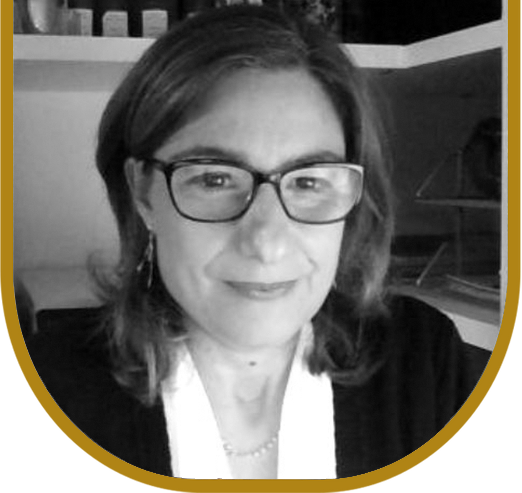
Donatella is Professor of Restoration at the Department of Civil-Environmental and Architectural Engineering, University of Cagliari. She is an Engineer, holds a PhD in Conservation of Architectural Heritage, and is Specialist in Restoration of Monuments at the Milan Polytechnic. She has been employed as architect at the Ministry of Cultural Heritage and Activities and Tourism (MiBACT). Also, Donatella is member of the Italian Society for Architectural Conservation/ Restoration (SIRA), General Secretariat of the National Scientific Committee of the Istituto Italiano dei Castelli (Italian Institute of Fortresses), ICOFORT and ICOMOS Expert Member.
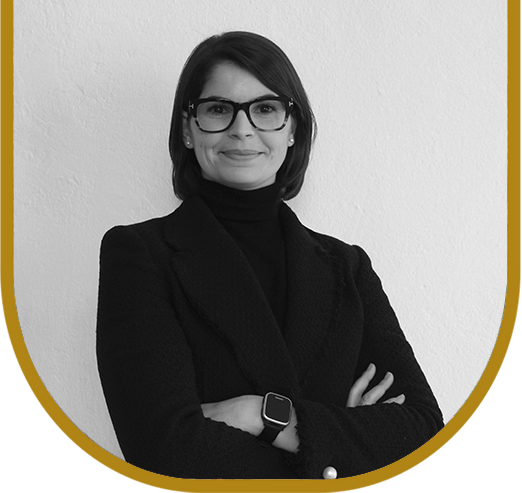
Elisa is research fellow in the field of Restauration at the Department of Civil-Environmental and Architectural Engineering, University of Cagliari. She is a Conservator of Architectural and Environmental Heritage, holds a PhD in Civil Engineering and Architecture (in collaboration with the University of Edinburgh – Scottish Centre for Conservation Studies), and is Specialist in Architectural and Landscape Heritage (University of Naples Federico II). Also, Elisa is author of publications on the protection, conservation, and enhancement of the historical-architectural heritage, with particular attention to heritage in the state of ruination, the restoration of archaeological monuments and the reuse of military complexes, both nationally and internationally.
The print ISSN number of the international Conference on "Conservation of Architectural Heritage (CAH)" is 2636-347X
The online ISSN number of CAH conference is 2636-3488




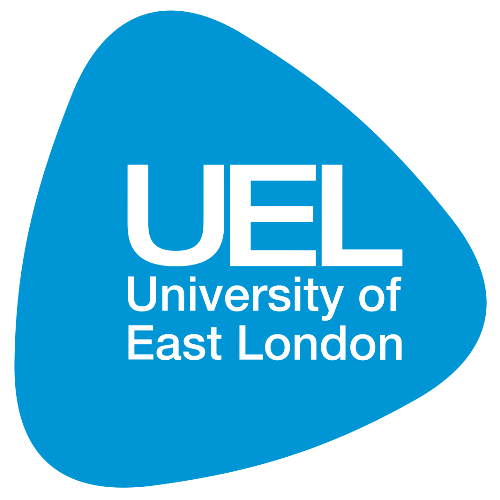







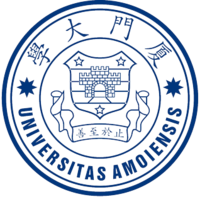

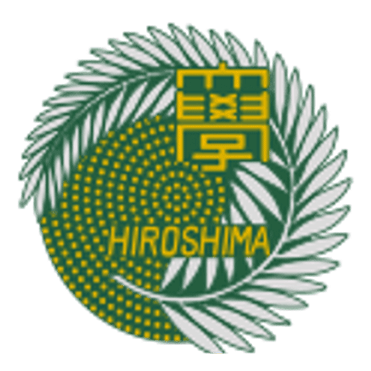
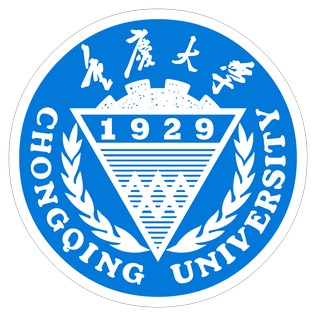
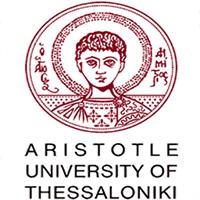
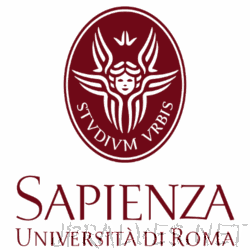
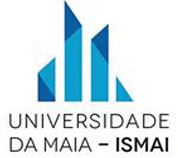



Reader in Architectural Heritage at School of Architecture, the University of Portsmouth, UK.

Reader in Architecture at School of Architecture, the University of Portsmouth, UK.
Nessma Farouk
Conference Coordinator
[email protected]
(+20) 3 5763827 | (+20) 3 5763828
(+20)1000028021
Subscribe to our newsletter
Join IEREK community